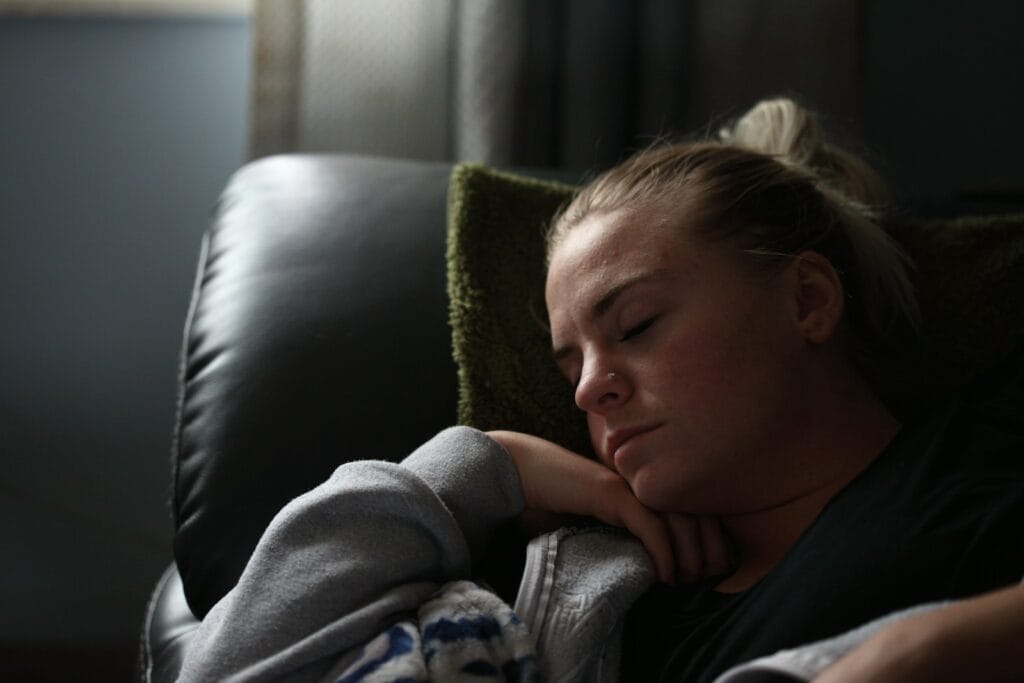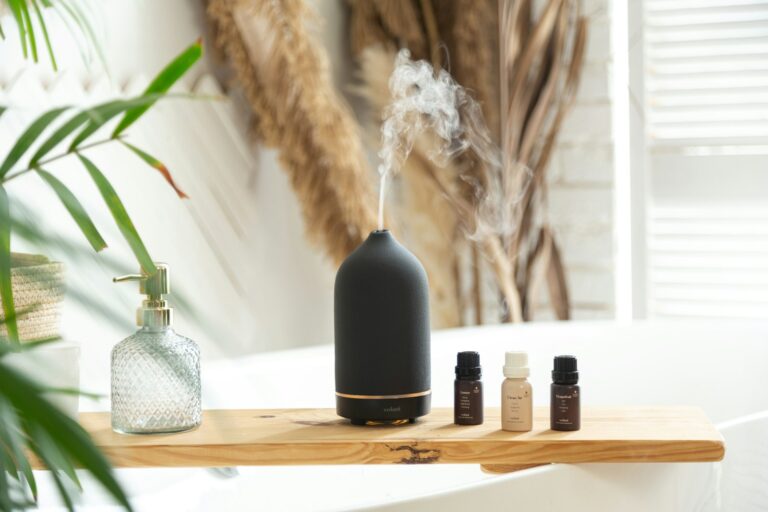Ever notice how some days you’re ready to tackle the whole house, but other days, even folding a shirt feels like a mountain? The usual advice about organizing by category doesn’t always consider the real driver behind getting things done—your energy. If you organize home tasks based on your own energy patterns, not just by category, managing the house suddenly feels a lot more doable.
Energy-based organizing starts with you—your habits, your rhythms, and how your mind and body rise and fall throughout the day. Some chores are easier in the morning, while others feel impossible at night. Breaking chores into smaller, manageable tasks keeps things from getting overwhelming.
You don’t need high energy to organize. Even when you’re tired or overwhelmed, there are simple ways to keep order. The goal isn’t a picture-perfect home, but an organization style that fits your natural energy flow.
Key Takeaways
- Matching chores to your energy levels makes home organization more doable and less stressful.
- Breaking big projects into bite-sized, energy-friendly tasks helps you finish more and burn out less.
- Simple systems that work with your habits stick around longer than forced routines.
Understanding Your Personal Energy Patterns
Everyone’s energy rises and falls during the day. Figuring out when you’re most alert (and when you’re not) makes planning chores easier and cuts down on stress.
Identifying High and Low Energy Periods
Your body follows a personal energy curve that repeats each day, tied to your internal clock. To spot your pattern, track your energy for a week on a scale from 1-10.
Notice:
- When you’re sharp and focused
- Times you can’t concentrate
- How meals affect your energy
- Whether you’re a morning or night person
Lots of people peak in the morning, hit a slump in the afternoon, and get a little boost at night. But your curve might be totally different.
Try jotting down your energy every few hours for a few days. Patterns will pop up. Once you know your rhythm, you can match tasks to your energy.
The Impact of Energy Levels on Procrastination
Low energy makes you more likely to put off chores. It’s not just laziness—your brain is trying to save resources.
Procrastination creeps in when:
- You try to do tough tasks when you’re wiped out
- The job feels huge
- You’re already mentally drained
To fight it, schedule work around your energy cycles. Save detail-heavy stuff for when you’re energetic. Use your tired times for easy wins—folding laundry, loading the dishwasher, whatever feels light.
Breaking up tasks helps, too. Set a 15-minute timer and just start. The beginning is usually the hardest part.
How ADHD and Mental Well-Being Affect Home Organization
ADHD changes how energy works for home tasks. People with ADHD often have:
- Unpredictable energy
- Bursts of focus (then crashes)
- Trouble starting boring tasks
- Executive function challenges
Traditional organizing advice rarely fits. Instead, make systems that cut down on decisions.
Your mental health impacts your energy too. Anxiety, depression, and stress can zap your resources and make organizing harder.
Small things—like enough sleep, quick breaks, or getting up to move—can help your mood and energy. Your organizing needs might shift depending on how you’re feeling.
Foundational Strategies for Organizing Home Tasks
The right approach can totally change how you manage your energy and get through your to-do list. Good systems work with your natural rhythms, not against them.
Creating a System That Aligns With Your Energy
Start by tracking your energy during the day. When do you feel sharp? When does your energy drop? Use this info to match chores to your mood and stamina.
Tackle tough stuff like deep cleaning or garage organizing when you’re at your best. Leave easy tasks for your low-energy moments.
Some simple tools:
- Color-coded calendars for energy highs and lows
- Task lists sorted by energy required
- Phone reminders set for your peak times
Keep cleaning supplies where you’ll use them to reduce overwhelm and make starting easier.
Prioritizing and Sequencing Tasks for Maximum Productivity
Not all chores matter equally. Use this simple chart:
| Task Type | Examples | When to Do |
|---|---|---|
| Urgent & Important | Fixing leaks, safety hazards | ASAP |
| Important, Not Urgent | Decluttering, deep cleaning | During high energy times |
| Urgent, Less Important | Quick tidy before guests | Delegate or do fast |
| Neither Urgent nor Important | Reorganizing bookshelf | Low energy or skip |
Break big jobs into smaller steps. Instead of “clean kitchen,” write: wipe counters, wash dishes, sweep floor. You’ll see progress and can pause when your energy fades.
Try finishing one room at a time. It’s less overwhelming than bouncing all over the house.
Incorporating a Routine That Supports Consistent Progress
Tie small organizing actions to habits you already have. This “habit stacking” helps new routines stick.
For example:
- While coffee brews → wipe counters
- Before your shower → put away one bathroom item
- While brushing teeth → straighten towels
A 10-minute daily reset can keep clutter at bay. Set a timer and put things back each night.
A quick weekly planning session helps too. Spend 15 minutes on Sunday looking over what needs attention and matching it to your expected energy for the week.
Consistency wins over perfection. Small daily actions that fit your energy patterns will simplify your home more than rare marathon cleaning sprees.
Practical Solutions for Effective Home Organization
Matching chores to your energy makes home organization way easier. The right tools and tricks help keep your home tidy without tons of effort.
Decluttering and Tidying With Purpose
Sort stuff into four piles: keep, donate, sell, or toss. This regular decluttering keeps junk from piling up and makes cleaning easier.
Set a timer for 15 minutes and tackle a small area each day. It’s less exhausting and fits into busy lives.
Try the “one in, one out” rule—when you buy something, get rid of a similar item. It works well for clothes, books, and kitchen gear.
Schedule decluttering when your energy is high. Morning people, do it before noon. Night owls, go for the evening.
Quick decluttering spots:
- Junk drawer
- Medicine cabinet
- Pantry
- Digital files
- Mail and papers
Optimizing Storage Solutions and Maximizing Space
Pick affordable storage solutions that actually solve your problems—not just pretty bins. The right storage fits your stuff and your space.
Measure before buying containers. Saves money and headaches.
Group similar items together based on use. Keep coffee, filters, and mugs in one spot for smoother mornings.
Look for furniture with built-in storage—ottomans, beds with drawers, coffee tables with shelves. You’ll hide clutter but keep it handy.
Drawer dividers work wonders in bathrooms, kitchens, and bedrooms. They keep small things sorted and double your drawer space.
Labeling and Using Clear Containers for Easy Organization
Clear containers let you see what’s inside fast. They’re great for pantries, craft rooms, and closets.
Make a simple labeling system—use a label maker or just handwrite tags. Labels help everyone keep things organized.
For kids, use picture labels with words so they know where things go.
Store seasonal stuff in color-coded bins—green for spring, blue for winter. You’ll find holiday decorations or cold-weather clothes in seconds.
Labeling tips:
- Use waterproof labels in wet areas
- Keep style and placement consistent
- Update labels if contents change
- Make text big enough to read easily
- Use broad categories instead of item names when you can
Utilizing Vertical Space and Shoe Storage Ideas
Wall space is storage gold. Add floating shelves above doors or windows for books, display pieces, or seasonal things.
Vertical storage like over-door organizers, pegboards, and wall racks can triple your space without eating up the floor.
For shoes, rotate seasonal pairs to the front of the closet. Use clear shoe boxes with photos for pairs you don’t wear much.
Hang hooks at different heights for adults and kids. Coats, bags, and hats are more likely to get hung up—not dumped on the floor.
Try a vertical shoe rack so you can see all your shoes at once. No more forgetting about pairs buried at the bottom.
Advanced Tips From Professional Organizers
Professional organizers have some tricks for organizing your home around your energy, while saving time and money.
Maintaining Momentum in Your Home Organization Project
Starting a home organization project is usually easier than keeping it going. Try breaking chores into 15-minute chunks that match your energy.
Morning person? Sort mail or organize a drawer before work.
Night owl? Fold laundry or wipe counters in the evening.
Set a timer so you don’t overdo it. You’ll stay focused and avoid burnout.
Track your progress visually. A checklist on your phone or a paper chart on the fridge gives a little boost as you check things off.
Take before and after photos. Seeing your progress can be a real motivator when your energy drops.
Balancing Saving Money and Quality Solutions
You can save money on organizing without sacrificing quality. Start by “shopping your home”—look for baskets, boxes, or bins you already have.
Budget-friendly options:
- Shoe boxes (cover them with contact paper to make them last)
- Mason jars for small stuff
- Washed food containers for pantry storage
Spend more on things you’ll use every day, like sturdy drawer dividers or a solid entryway organizer.
Try the “wait a week” rule before buying new organizing gear. Sometimes you realize you don’t really need it.
Look for multi-purpose furniture—an ottoman with storage or a bed with drawers gives you more bang for your buck.

Frequently Asked Questions
Managing chores based on your energy helps you get more done with less stress. Here are some common questions about cleaning, organizing, and keeping up with it all.
What strategies can help match household chores with personal energy levels?
Track your energy for a week and see when you feel most productive. It’s simple, but it works.
Tackle big chores like vacuuming or scrubbing when you’re at your peak. Save folding laundry or dusting for low-energy times.
Break big jobs into smaller pieces that fit your energy window. Cleaning the bathroom? Split it into three 10-minute tasks.
Plan chores around your energy instead of forcing yourself to work when you’re wiped out. It makes the whole thing feel a lot less daunting.
How can one create an effective cleaning schedule that accommodates a busy lifestyle?
Try blocking out short cleaning sessions in your calendar—just 15 or 30 minutes here and there can really add up. It’s surprising how much you can get done when you’re focused.
A lot of people swear by the “one room per day” method. You just pick a different area for each day, and suddenly your whole weekend isn’t eaten up by chores.
Organize meal prep efficiently while you’re at it. Making a few meals at once means less kitchen mess piling up every day.
Don’t waste those little wait times—wipe down the counter while your coffee brews or clean the bathroom sink while the shower heats up. It’s multitasking, but not in an overwhelming way.
What are the essential weekly cleaning tasks for maintaining a tidy home?
Vacuum or sweep the spots where everyone walks the most. It only takes a few minutes and really helps your place look fresher.
Wipe down kitchen and bathroom surfaces with disinfectant. These spots get dirty fast, so a quick clean keeps things under control.
Toss in a load or two of laundry during the week instead of letting it all build up. It’s way less stressful that way.
Take about 10 minutes each day to pick up stray stuff. This quick reset makes everything feel more manageable.
What is the most efficient method to clean and organize your house within a week?
Start by getting rid of clutter. Just walk through each room and put things back where they belong.
Clean rooms from top to bottom—dust shelves and fans before you vacuum or mop. That way you’re not doubling your work.
Use vertical space with shelves or hooks. It keeps your go-to items handy but not in the way.
Stick with one room until it’s done. Seeing progress in one spot can actually make it easier to keep going.
Can you outline a professional’s approach to house cleaning for optimal results?
Grab all your cleaning supplies and toss them in a caddy before you start. It saves a ton of back-and-forth.
Pick a direction—clockwise or counterclockwise—and follow it around the room so nothing gets missed.
Use microfiber cloths instead of paper towels. They grab more dirt and you can just toss them in the wash.
Let cleaning sprays sit for a few minutes before wiping. It makes scrubbing way easier and you use less elbow grease.
What techniques are recommended for organizing and decluttering your space during spring?
Try the four-box method: keep, donate, store, and trash. It’s a simple way to make decisions on the spot, so you don’t just end up shuffling clutter from one corner to another.
Organize based on energy, not just categories. Think about when and how you use things—put the stuff you reach for every day in spots that actually make sense for your routines.
Set a timer for 15-30 minutes and just focus on one small area. Honestly, breaking it down like this keeps you from getting overwhelmed, and it’s surprising how much you can get done in a short burst.
Take before and after photos of your spaces. It might sound a bit silly, but seeing the difference can be super motivating when you’re tempted to let things slide.




